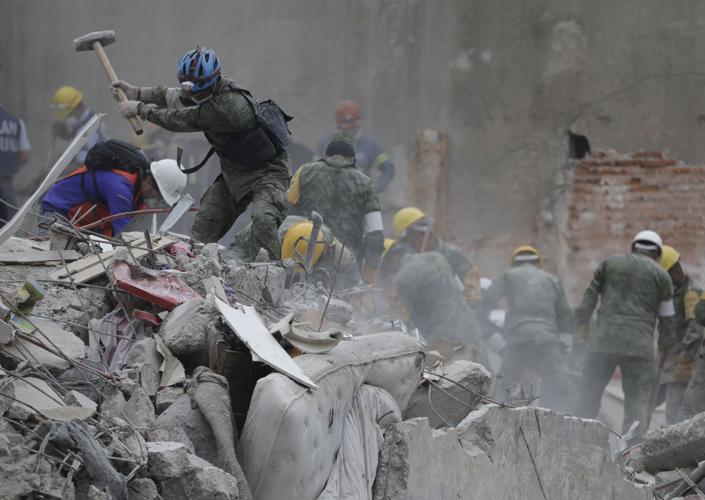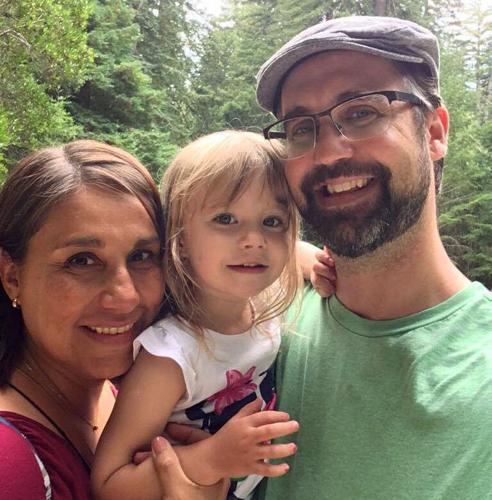The earthquake alarm didn’t ring this time.
It was the violent shaking and the four-story building’s crumbling that made me jump from our Mexico City apartment’s dining area to the living room to find a safe spot.
It was initially impossible for me to comprehend what was happening.
Only two weeks earlier the earthquake alarm warned us about an 8.2 magnitude temblor — Mexico’s largest recorded quake. That one struck the southeastern states of Chiapas and Oaxaca, leveling small towns and villages and killing at least 60 people. We got a scare, but in Mexico City nothing serious happened from that quake.
Tuesday’s quake was more than a scare.
On the anniversary of the 1985 earthquake here that killed more than 10,000 people, tragedy had again arrived without warning.
This week our city was shaken again by the horrible noise of buildings swaying, the deafening sound of gas explosions and old structures collapsing while the earthquake was still shaking us.
It was like a movie, a bizarre scene in which cities disappear in a second.
I didn’t react right away.
Trying to protect myself in my apartment, I lost time to flee downstairs to the common area of our complex in the Condesa-Roma neighborhood. When the shaking stopped, I rushed to find my bag, keys and shoes. I needed to get out of the building as soon as possible.
Another gas explosion from the building behind our apartment pushed me to run out toward our daughter’s school.
I warned our doorman to turn off the gas, power and water services as I left.
In the street, people were running aimlessly. The smell of gas escaped from teetering buildings on the brink of collapse. Employees from two nearby hospitals were evacuating patients and trying to calm them down. Most of them were elderly and clearly shaken.
All I wanted was to get to my daughter’s school, usually a short walking distance from our apartment.
It was the longest 15 minutes of my life.
Pushing people out of my way, fleeing the gas smell and trying to get a hold of my husband, who works about 30 minutes away.
At the same time the journalist in me kicked in and I debated, in my head and heart, whether I should stop to help, to take photos and video or send reports back to the newsroom.
I kept walking to find my family.
Nearly at the school, my husband, Dale, finally contacted me and told me wait at the school.
Our 2-year-old baby girl, Isabella, was fine. So were her little friends, who with our daughter had been gathered outside to wait for Dad or Mom to come.
The teachers were there too, providing hugs and comfort to the children.
My family reunited, we waited at the school until government officials said the gas leaks were under control and it was safe to go home.
Walking back, we saw drawn, devastated faces. Many people still were searching for loved ones.
On Avenida Insurgentes, a four-lane street close to our place, the cars, buses and trucks that normally would fill it had been replaced with people trying to get home and to their families.
Our house was fine, but we had no power, no gas, phone signal or internet.
We found refuge in our apartment. The constant sound of ambulances, patrol cars and helicopters reminded us of the tragedy here, and made it impossible to sleep.
When my phone signal blinked on, I was able to read and reply to some messages. That’s how I learned that many people had been killed, including several at a school.
I thanked God my family was safe and together.
The morning after the earthquake, the sun rose again in Mexico City and although there were only sad faces among my neighbors, my heart rejoiced when I saw hundreds of volunteers outside of collapsed buildings looking for survivors and organizing groups to help.
My heart rejoiced when my husband and I saw all these people helping, serving food and water to rescuers which had been donated by Mexico City’s residents.
On the streets of the Condesa-Roma area where I live, there is much hope and optimism, and as long as there is life under the collapsed building’s debris, rescue efforts will continue.
On Tuesday, I felt I could be facing death. I felt and saw tragedy.
Today I am filled with pride from seeing the solidarity of Mexico City’s people and from across the country. We faced misfortune and we comforted one another. We are people of faith and today we are more united and stronger than ever.





